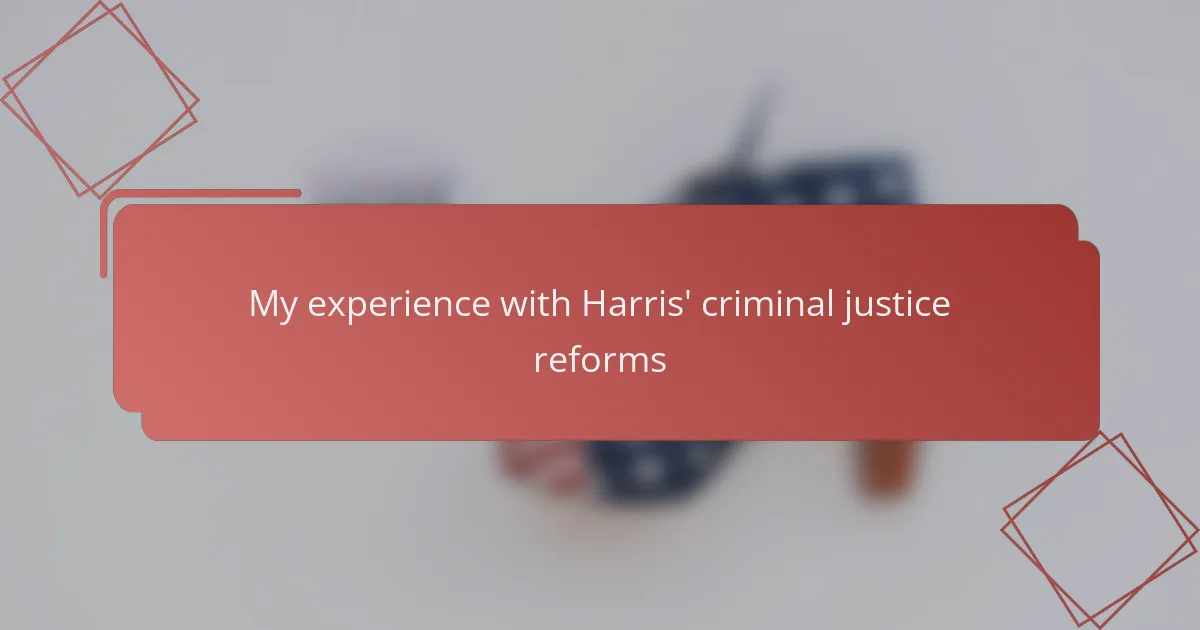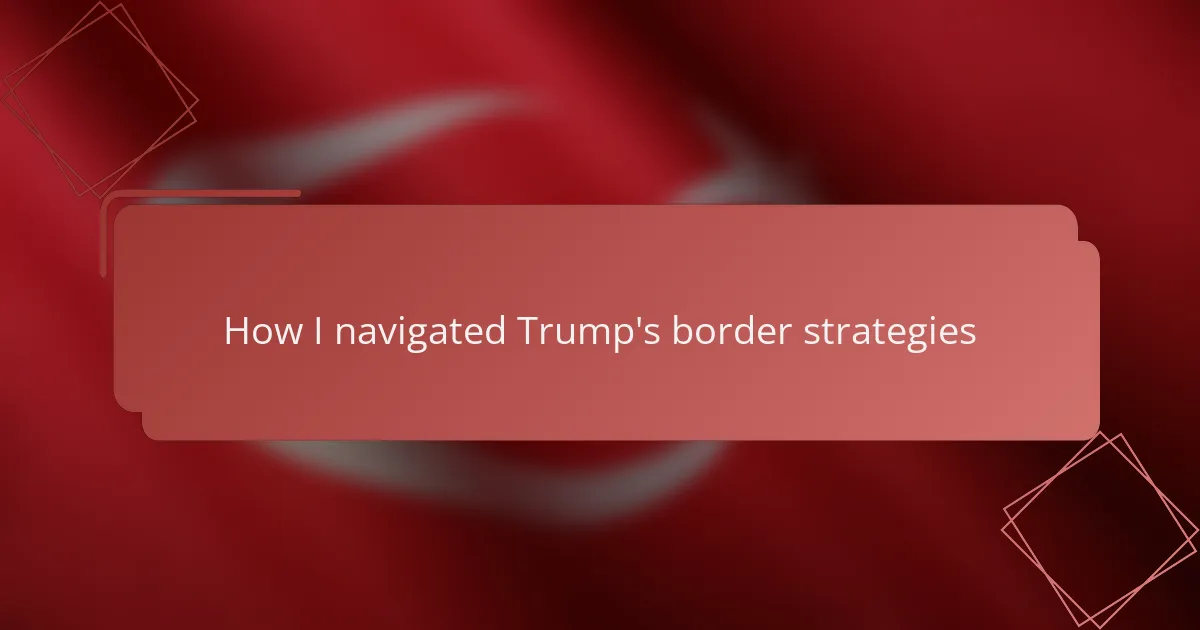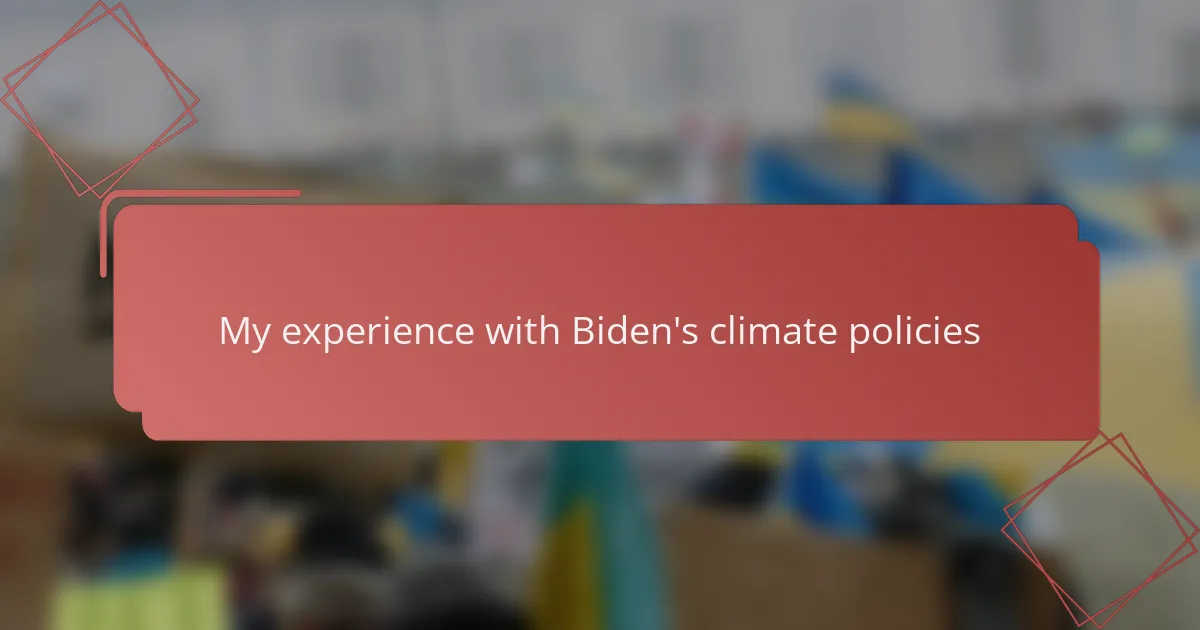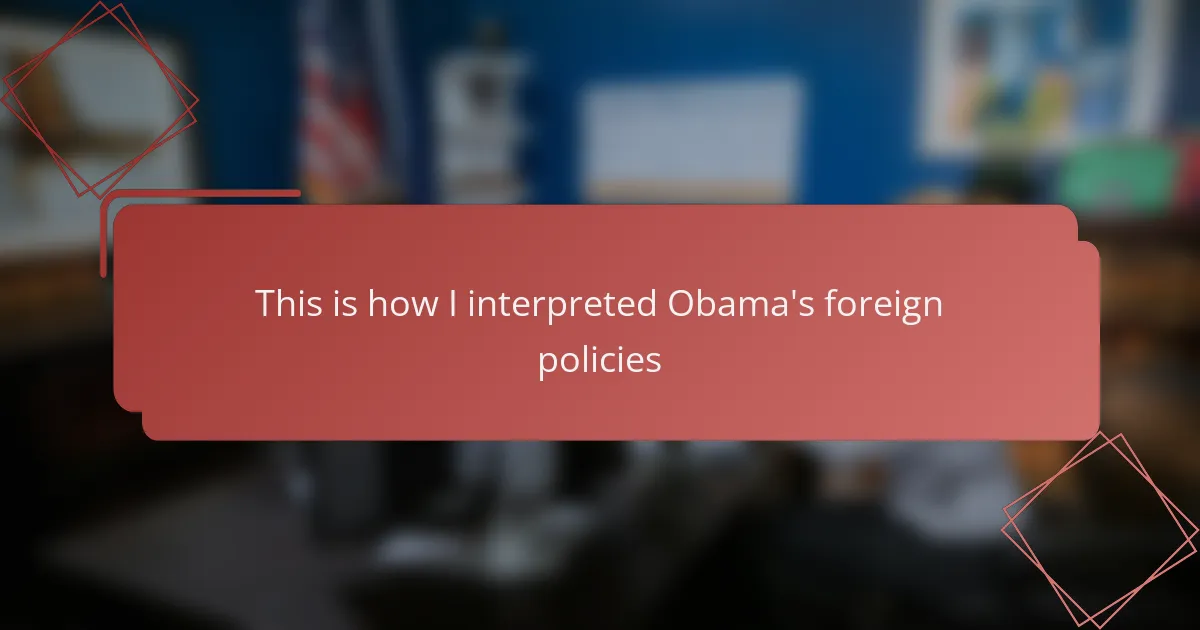Key takeaways
- Criminal justice reforms should be viewed through the lens of their real-life impact on individuals and communities, balancing public safety with individual rights.
- Key components of Harris’s reforms include reducing mandatory minimum sentences, expanding rehabilitation programs, and increasing support for reentry into society.
- Political satire serves as a critical tool in analyzing reforms by exposing contradictions and engaging the public through humor, making complex issues more relatable.
- Satirical commentary reflects societal frustrations and encourages discussion about the effectiveness of policies, often prompting critical thinking and engagement with political issues.
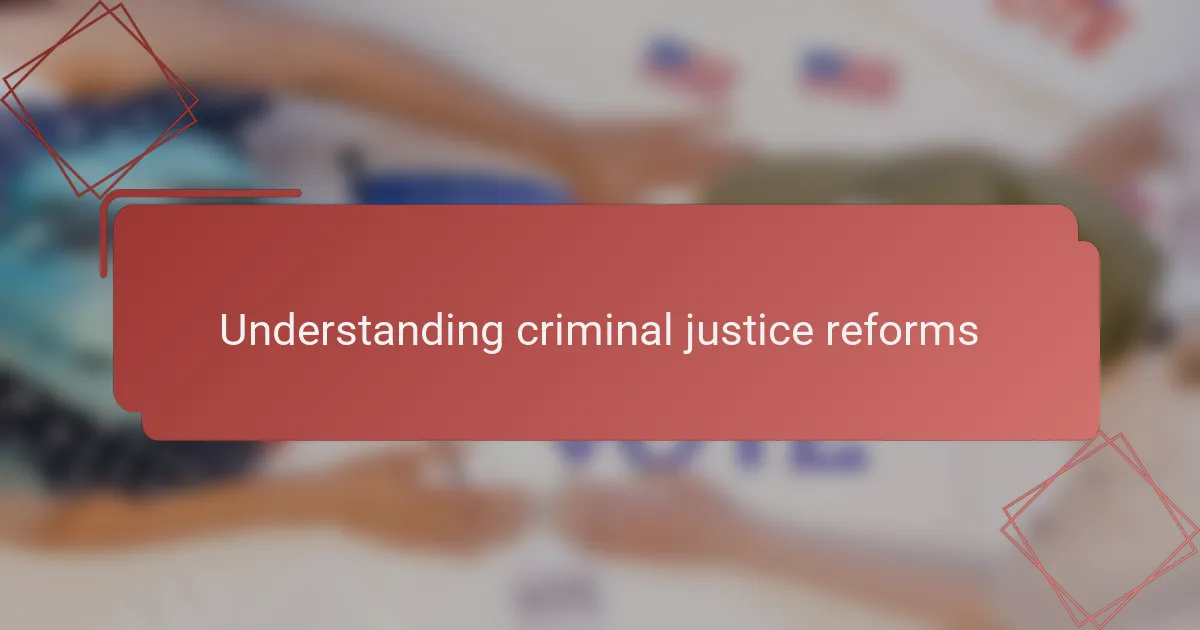
Understanding criminal justice reforms
Criminal justice reforms are often spoken about in broad terms, but understanding them means digging into the details of how laws, policies, and procedures affect real lives. I remember the first time I seriously looked into these reforms; it hit me how intertwined they are with social and economic factors that often get overlooked. Have you ever wondered how a single policy change can ripple through communities, sometimes for better or worse?
From my experience, reforms are not just about changing rules but about shifting mindsets within systems that have been resistant to change for decades. It’s frustrating to see how slow progress can feel, especially when those affected by these policies are crying out for fairness and justice. This made me question: are these reforms really about justice, or just the appearance of it?
Understanding criminal justice reforms also means realizing the balance they try to strike—between public safety and individual rights. When I first explored this, I was struck by how complex these decisions are, involving tough trade-offs. It’s easy to say “reform” without appreciating the human stories and dilemmas behind these efforts.
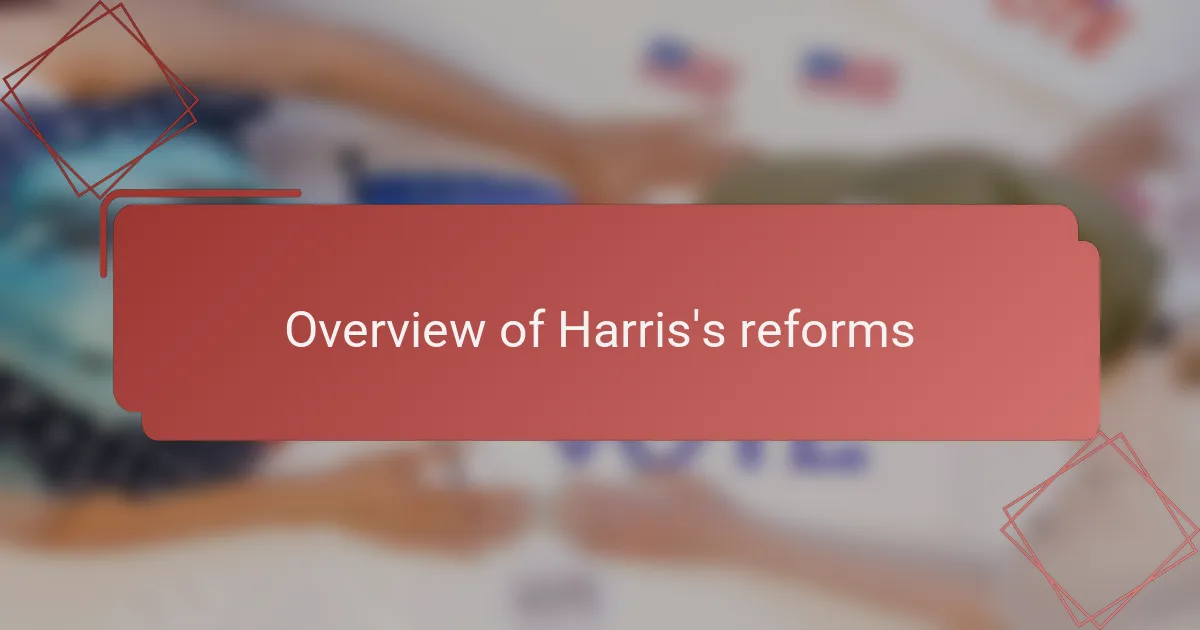
Overview of Harris’s reforms
Harris’s criminal justice reforms struck me as a blend of bold vision and practical challenges. From my perspective, these reforms aimed to tackle long-standing issues like sentencing disparities and prison overcrowding. I remember reading about the shift toward rehabilitation over punishment and feeling cautiously optimistic, though I wondered how smoothly such changes could be implemented.
One aspect that stood out to me was the focus on reducing recidivism by expanding support programs for formerly incarcerated individuals. In my experience following these policies, I noticed how advocates celebrated the increased funding for job training and mental health services—small steps that, I believe, have the potential to reshape lives. Here’s a quick rundown of the key components:
- Reduction of mandatory minimum sentences for non-violent offenses
- Expansion of diversion programs aimed at rehabilitation
- Increased funding for mental health and substance abuse treatment
- Efforts to improve police accountability and community relations
- Initiatives to reduce prison overcrowding through early release programs
- Emphasis on reentry support such as job training and housing assistance
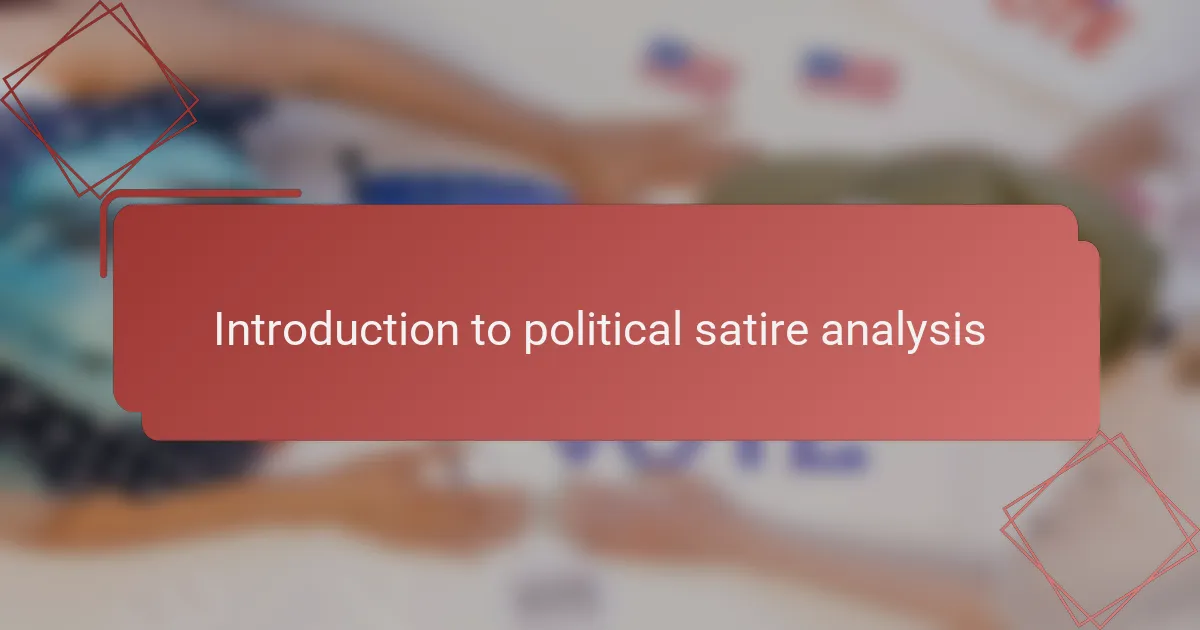
Introduction to political satire analysis
Political satire analysis often uncovers the layers beneath political actions, shining a critical light on the intentions and outcomes of policies. When I first encountered satire related to Harris’s criminal justice reforms, it felt like a clever mirror reflecting the stark realities masked by official speeches. Analyzing satire requires understanding not only the humor but the deeper social commentary it delivers.
I remember reading a sharp satirical piece that highlighted the contradictions in Harris’s promises versus the on-the-ground effects of her reforms. It struck me how satire can both amuse and provoke a sense of urgency about complex issues.
- Satire exposes political contradictions
- Humor makes heavy topics more accessible
- Offers unique insights into public perception
- Encourages critical thinking about policies
- Reflects societal frustrations and hopes
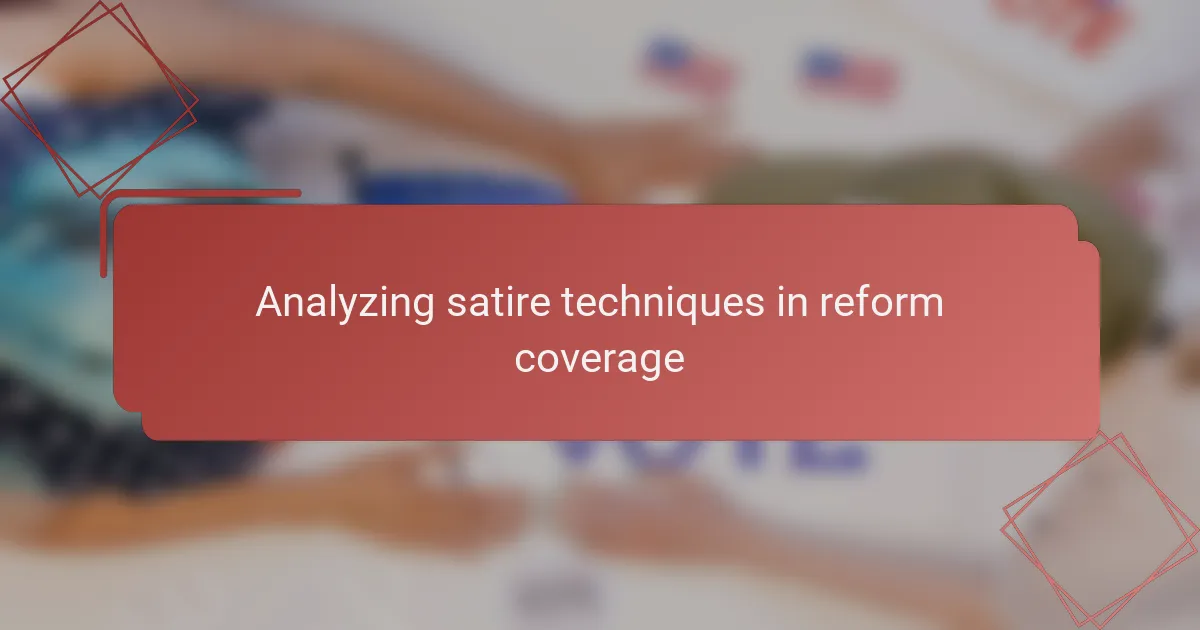
Analyzing satire techniques in reform coverage
Analyzing satire in coverage of Harris’s criminal justice reforms reveals how humor can highlight complexities and contradictions in policy. I’ve noticed that satire often uses irony to expose gaps between promises and outcomes, which made me more critical of media portrayals. This technique created moments that were both amusing and thought-provoking, deepening my understanding of the reforms’ real-world impacts.
| Satire Technique | Use in Harris Reform Coverage |
|---|---|
| Irony | Highlights contrast between reform promises and actual results |
| Exaggeration | Amplifies absurdities in policy consequences for comedic effect |
| Parody | Mimics official statements to reveal contradictions and hypocrisy |
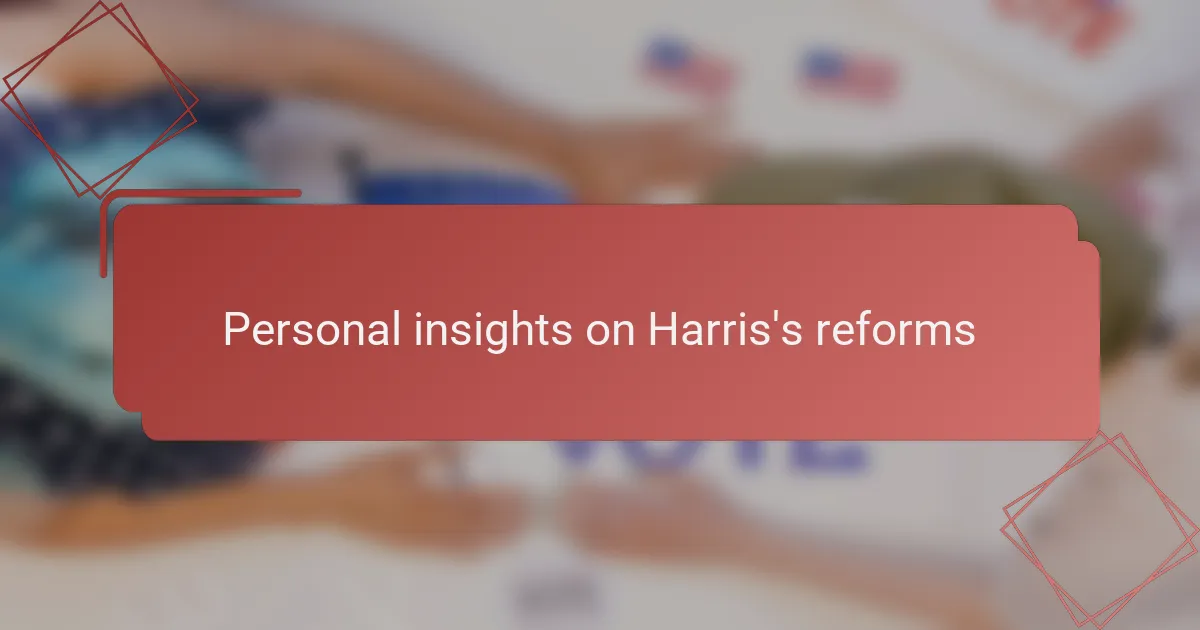
Personal insights on Harris’s reforms
Looking back on Harris’s reforms, I found myself torn between hope and skepticism. There was this moment when I read about reducing mandatory minimums and wondered, “Could this actually break the cycle of prison overcrowding?” From where I stood, it seemed like a rare glimpse of genuine change, yet I couldn’t shake the feeling that system inertia might blunt the impact.
One personal insight that stuck with me was observing how the expansion of diversion programs played out in real communities. I met someone who benefited from job training funded by these reforms, and their story gave me a sense of the human potential behind policy jargon. It made me realize reforms are more than legislative bullet points—they’re lifelines for real people.
But I also questioned how well these reforms addressed the deeper issues, like systemic bias or police accountability. At times, I felt the efforts were more performative than transformative—raising the question: are reforms designed to fix problems or just to look like they’re fixing them? That doubt lingered with me, especially when satire peeled back the polished surface to reveal messy truths.
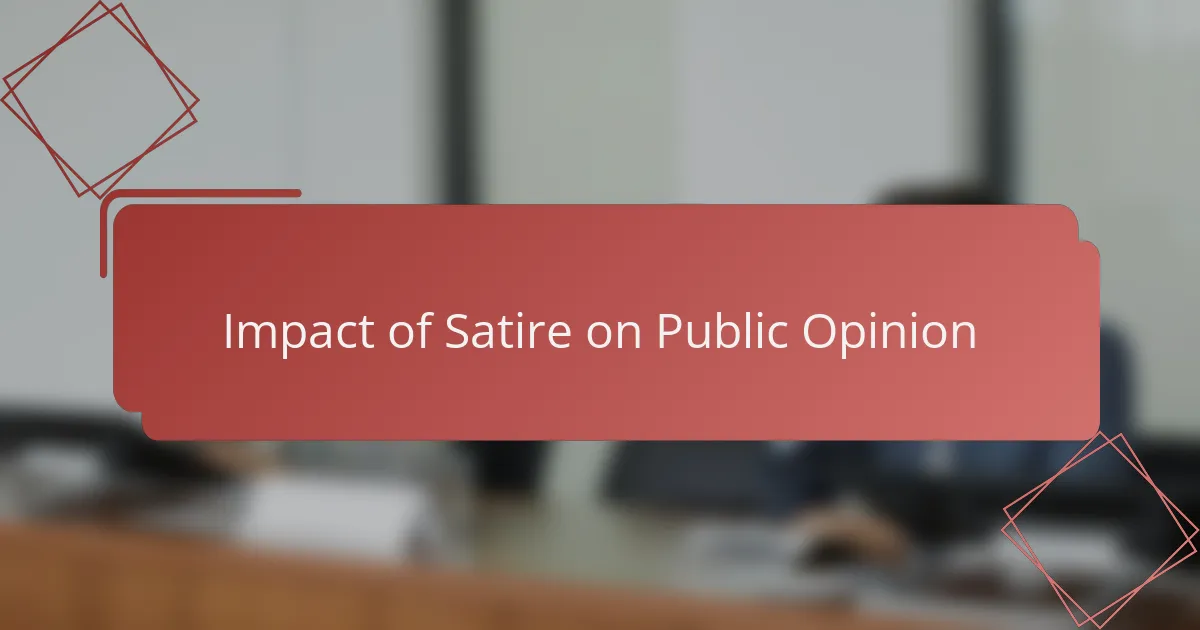
Impact of satire on public opinion
Satire has a unique way of shaping public opinion by highlighting the absurdities in serious issues like Harris’s criminal justice reforms. From my experience, satire made these complex policies more relatable and sparked lively discussions among friends who otherwise wouldn’t engage with political topics. It’s impressive how humor can cut through the noise and make people think critically.
| Aspect | Effect on Public Opinion |
|---|---|
| Engagement | Satire captures attention by making complex reforms entertaining and accessible. |
| Awareness | Highlights inconsistencies and flaws in Harris’s policies, increasing public scrutiny. |
| Emotional Impact | Use of humor evokes a mix of amusement and frustration, deepening connection to the issues. |
| Discussion | Encourages conversations that might not happen through traditional news coverage. |
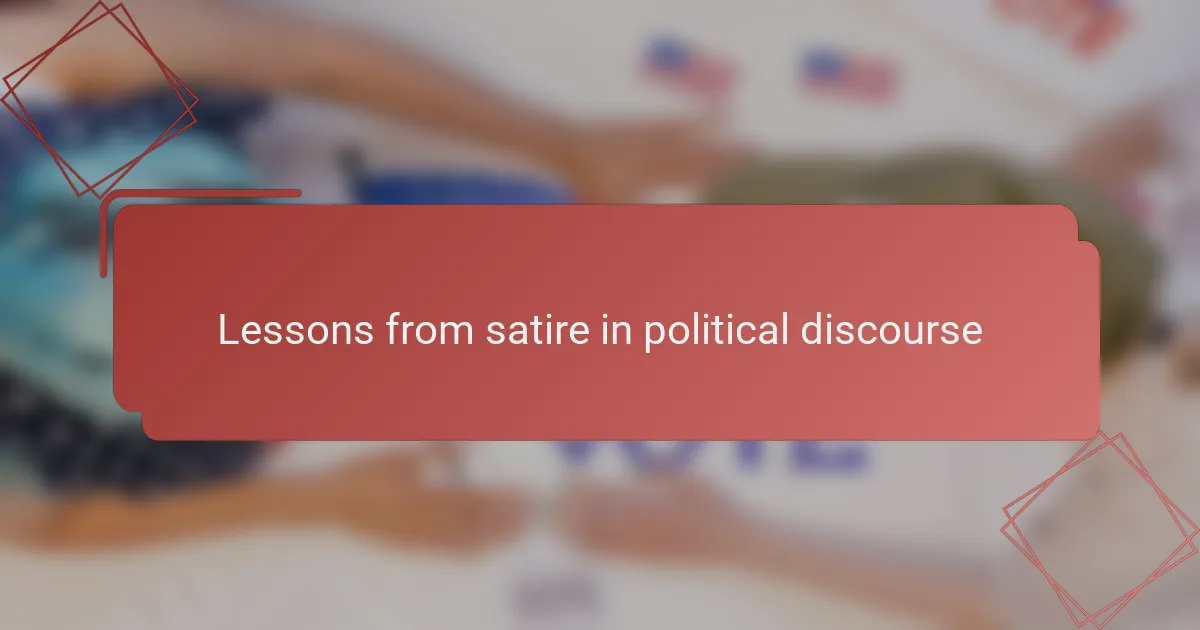
Lessons from satire in political discourse
Lessons from satire in political discourse often reveal truths that straightforward debates miss. I noticed that satire cuts through the noise by highlighting absurdities in policies like Harris’s criminal justice reforms. It made me reflect on how humor can both entertain and educate, driving home critiques in a way facts alone sometimes can’t.
What struck me most was how satire mirrors public sentiment, amplifying frustrations while pushing for accountability. In my experience, this type of commentary brings a human element to complex issues, making the reforms feel more tangible and urgent. It’s almost like satire acts as a societal mirror—funny but uncomfortable, forcing us to confront real failures and hopes.
| Aspect | Satirical Impact |
|---|---|
| Communication Style | Uses humor and irony to simplify complex reform issues |
| Public Engagement | Increases attention by making reforms relatable and emotionally charged |
| Message Clarity | Highlights contradictions in Harris’s policies, prompting critical thinking |
| Emotional Resonance | Connects with audience frustration and hope through comedic critique |
